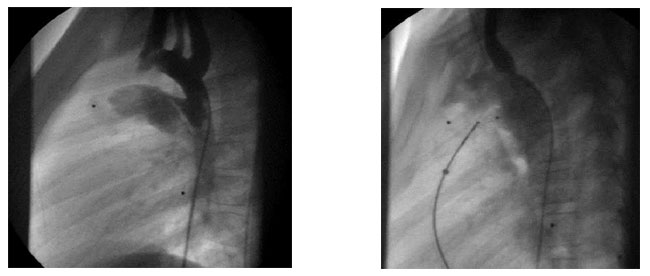Catheter Procedure for Babies: A Novel Method of Closing Holes in the Heart without Surgery
by admin-blog-kh | March 1, 2016 4:57 am
Uma is a one-year old baby girl from Assam. Her parents brought her to Kauvery Hospital, Chennai, with complaints of lung congestion and breathing difficulties. Uma was unable to feed well, and did not gain weight like a normal baby of her age. She was diagnosed with a heart problem called patent ductus arteriosus (PDA). She was in need of proper treatment without any delay in order to get saved.
What is patent ductus arteriosus?
The PDA is a little tube-like structure, which connects the umbilical cord and the two major blood vessels that take blood out of the heart. It is present in all babies prior to birth. Its major function is to provide a short-cut passage for mother’s oxygenated nutrients-rich blood straight to the baby’s heart; this supply of blood is done away from the lungs, as they are filled with fluid during pregnancy.
The supply has to be done through the PDA for the healthy upkeep and growth of the baby, as long as it is in the womb. The ductus arteriosus normally closes on its own soon after birth. When the baby starts breathing, the lungs begin to function, taking in oxygen from the air and pumping out the fluid. But in certain cases, the PDA continues to remain open for long.
Complications caused by open PDA
As the lung pressure is lower than the blood pressure, a patent ductus arteriosus allows increased flow of blood to the lungs; this leads to congestion in the lungs, which in turn causes, in PDA-babies, symptoms such as frequent chest infections, breathlessness, excessive sweating while feeding, and difficulty in feeding and poor weight gain.
If left untreated, the increased flow of blood to the lungs can do irreparable damage to the lungs and heart over a period of time. The inevitable result would be a shortened life span for the affected child.
An echocardiography, which is an ultrasound examination of the heart, done for Uma, confirmed the diagnosis of patent ductus arteriosus. I discussed with her parents the option of catheter procedure, the novel method of closing this opening without doing conventional heart surgery.
What is done during the catheter procedure?
In this procedure, a small, specially made device is placed in the PDA to close and seal off the hole in the heart. Under sedation, a needle puncture is made first in a vein in the upper thigh; through this puncture, the closure device is inserted with the help of a catheter (a thin flexible tube), and guided to the hole in the heart.
Once the device is positioned in the right place, the catheter is gently pulled out, and the puncture is closed. The entire procedure takes just a few minutes, and the patient can get discharged the next day. Within six months, normal tissue grows over this device; the latter gets dissolved into the body, when it has served the purpose.
Uma’s parents agreed readily to this novel catheter procedure, as they understood how simple and easy it is. Its advantages, as listed below, are quite a few, when compared to traditional surgical closure.
Advantages of catheter procedure over open heart surgery
1. As the device is guided to and positioned across the PDA through a tiny puncture mark in the groin, the child is spared of any scar on the chest.
2. The patient is ready for discharge the day following the procedure; so, the period of stay in hospital is limited to 3-4 days.
3. The pain associated with non-surgical closure of the PDA is significantly less compared to surgical closure.
4. In older children, the procedure can be done under sedation, thereby avoiding the need for general anaesthesia in advanced cases of PDA.
How Uma underwent catheter procedure
With parental consent, Uma was taken to the catheter laboratory, anaesthetized as her case was rather serious, and prepared for the echocardiography-guided procedure. An initial angiography was performed. This involved injecting a contrast dye into the chosen vein; as the dye was carried by the circulating blood to the heart, a profile of the hole in the heart – the PDA – was viewed clearly on the monitor.
 Once the PDA was accurately located, the suitably sized closing device was guided with the help of the catheter to that exact location, and positioned. A repeat angiography was done to confirm the satisfactory positioning of the device with complete closure of the opening in the PDA.
Once the PDA was accurately located, the suitably sized closing device was guided with the help of the catheter to that exact location, and positioned. A repeat angiography was done to confirm the satisfactory positioning of the device with complete closure of the opening in the PDA.
Thus the catheter procedure was completed successfully for Uma. She recovered a few hours later, and was found in good health. After overnight observation and investigations, she was discharged the following day to the delight and complete satisfaction of her parents.
The present scenario
Closing such holes in the heart has been a practice for some time in the field of Paediatric Cardiology. The advent of newer, user-friendly devices designed specifically for such purposes have made catheter procedure very safe for the patients. Moreover, the outcome assures a high percentage of success in skilled hands.
Other holes within the heart such as atrial septal defect (ASD) and ventricular septal defect (VSD) can also be safely closed nowadays, following this procedure and using such devices. You can thus avoid open heart surgery altogether, in case your child is diagnosed with a hole in the heart.
 Article by Dr.R.Prem Sekar M.B.B.S., MRCPI., FRCP (Glasg)
Article by Dr.R.Prem Sekar M.B.B.S., MRCPI., FRCP (Glasg)
Consultant Interventional Paediatric Cardiologist, Kauvery Hospital
Kauvery Hospital is globally known for its multidisciplinary services at all its Centers of Excellence, and for its comprehensive, Avant-Grade technology, especially in diagnostics and remedial care in heart diseases, transplantation, vascular and neurosciences medicine. Located in the heart of Trichy (Tennur, Royal Road and Alexandria Road (Cantonment), Chennai, Hosur, Salem, Tirunelveli and Bengaluru, the hospital also renders adult and pediatric trauma care.
Chennai – 044 4000 6000 • Trichy – Cantonment – 0431 4077777 • Trichy – Heartcity – 0431 4003500 • Trichy – Tennur – 0431 4022555 • Hosur – 04344 272727 • Salem – 0427 2677777 • Tirunelveli – 0462 4006000 • Bengaluru – 080 6801 6801
Source URL: https://www.kauveryhospital.com/blog/paediatrics/catheter-procedure-for-babies-a-novel-method-of-closing-holes-in-the-heart-without-surgery/